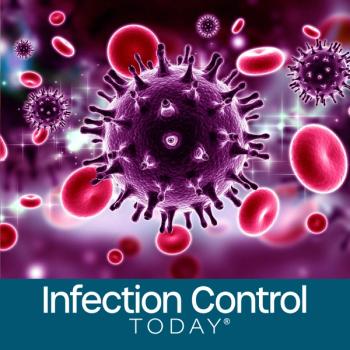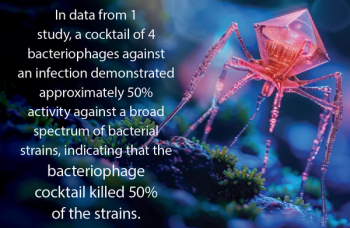
Infection Control Today - 06/2002: Who wants to be a Microbiologist?
Who wants to be a Microbiologist?
Comical Clues to Cleaning and Disinfecting
By Kelli M. Donley
He sits across from you in the gray suit, with the perfectly matching graytie. While he berates you with questions, the only thing you can concentrate onis your increased heart rate and perspiring brow. The room grows dark,spotlights circle, nerve-wracking music plays and you silently review yourlifelines. No, that monochromatic gentleman isn't Regis Philbin -- he's yourinfection control practitioner (ICP). [Audience gasp!]
Don't be intimidated about cleaning and disinfecting. Be prepared to answer abombardment of infection control-related questions.
Reviewing the Basics
$100
What is the definition of a microbe?
A. A small robe.
B. A unicellular organism.
C. An ultramicroscopic unit of protoplasm.
D. An antifungal agent.
$200
What is the definition of a bacterium?
A. A one-celled organism without a true nucleus.
B. A tumor-like growth.
C. A parasite that invades red blood cells.
D. A ring-like thickening of tissue.
$500
Categories of antimicrobials include all but one of the following:
A. Spongiforms
B. Disinfectants
C. Antiseptics
D. Germicides
$1,000
Viruses have all but one of the following characteristics:
A. They are the smallest organism identified by an electron microscope.
B. They have a core of either DNA or RNA.
C. They reproduce outside of cells.
D. They adhere to cell membranes to avoid destruction by the immune system.
$2,000
The clustering shape of bacteria is called?
A. Micrococci
B. Diplococci
C. Streptococci
D. Staphylococci
$4,000
What does the suffix stasis mean?1
Example: bacteriostasis
A. The study of matter at rest.
B. Infectious.
C. The inhibition of microbial growth by means other than killing.
D. Remaining in a fixed condition.
$8,000
Hans C.J. Gram, a Danish physician, created a method of staining bacteria to:
A. Identify certain microorganisms.
B. Determine their lifespan.
C. Determine their protein makeup.
D. Identify the number of bacteria present.
$16,000
The difference between disinfection and sterilization is:
A. Sterilization kills all organisms present.
B. An object can be partly sterilized.
C. Tissue cannot be disinfected.
D. Disinfectants kill only viruses.
$32,000
Antiseptics are used to clean:
A. Hospital surfaces
B. Intravascular medical instruments
C. Live tissue
D. Implantable devices
$64,000
Disinfectants work better under all but one of the following conditions:
A. When there are no endospores.
B. When cells are actively growing.
C. Against gram-negative bacteria.
D. On surfaces.
$125,000
All but one of the following are methods of sterilization:
A. Moist heat
B. HEPA filtration
C. Dry heat
D. UV radiation
$250,000
Enzymes have all but one of the following characteristics:
A. They cannot act outside of cells or live in vitro.
B. They are made of proteins.
C. They can catalyze numerous times.
D. They do not need an external energy source to react.
$500,000
A bacteriophage is a:
A. A virus that infects bacteria.
B. A substance that inhibits the growth of bacteria.
C. A buildup of proteins within bacteria.
D. The condition of having bacteria in the urine.
$1,000,000
If left on a stainless steel table for one month, which organism would diethe fastest?1
A. E. coli suspended in a drop of water.
B. E. coli suspended in pus.
C. An endospore
D. Mycobacterium tuberculosis
Need a Lifeline?
By Kelli M. Donley
Whilepolling your staffing audience for the right answer may help bring you down tothe 50/50 mark, it is important to know when to call in the experts foradditional help. Once such microbiology whiz is Stephen T. Abedon, PhD,professor and researcher at Ohio State University. Abedon, who created severalof the aforementioned test questions for one of his course lectures, is amicrobial evolutionary ecologist who runs a quirky Web site about his passion:phages. (
"The Web site represents a quasi-organized list of everything that Iwish I knew off the top of my head, but don't," he says.
Abedon, who teaches medical microbiology, explains several principleshealthcare workers (HCWs) should know about cleaning and disinfecting.
"To kill, a disinfectant must both penetrate and then destroy someaspect of a microorganism," he says. "It is easy to produce highlypenetrating and deadly disinfectants. The problem, however, is one of handlingthose disinfectants. For instance, nuclear weapons probably do a wonderful jobof killing off local microbial life, but hardly would qualify as a relativelyinnocuous disinfection procedure.
"Mycobacterium tuberculosis is resistant to disinfectantsparticularly because the waxy outer coating of mycobacteria prevents thepenetration of various chemical antibacterials. The extra-slow growth rates ofthese bacteria may also give rise to their reduced susceptibility sincedisinfectants typically are more effective against actively growing bacteriathan against not-growing bacteria. So, disinfectants tend to lack an ability todestroy everything (including all living things) in their vicinity, which isgood because we often are in their vicinity, but also is bad because it limitstheir ability to kill the very organisms that you would hope they wouldkill."
And the details surrounding that million-dollar question?
"Endospores are notoriously resistant to desiccation (drying out), asare mycobacteria," he says. "So in the question that leaves the E.coli. It turns out that bacteria can be more stable suspended withinorganic-rich environments, such as pus. Note, however, that it once was aperfectly legitimate means of storage of at least some bacterial strains tosimply place them in distilled water and then hold them there at roomtemperature."
Abedon, who has a penchant for all things tie-died, has comical, yetpractical advice for those cleaning and disinfecting medical instruments.
"Wear gloves to protect yourself, keep your hands away from your faceand also avoid using chemical disinfectants except in reasonably well-ventilatedenvironments," he says. "In other words, take care of yourselves. Ohyes, and don't forget to read the directions on the disinfectant bottle."
And yes, that is his final answer.
Newsletter
Stay prepared and protected with Infection Control Today's newsletter, delivering essential updates, best practices, and expert insights for infection preventionists.






